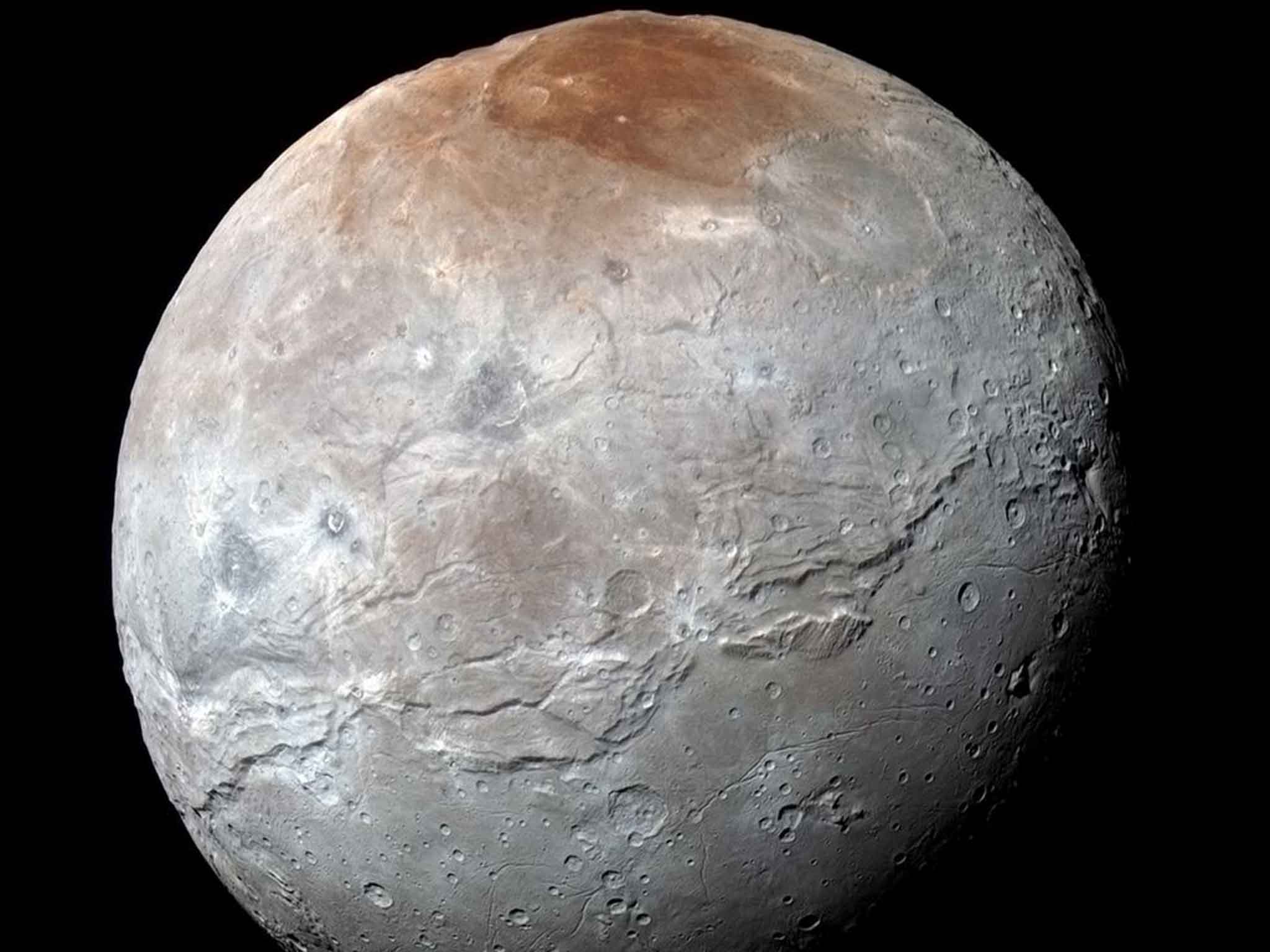Science
Related: About this forumPluto's Moon Charon Just Got More Fascinating After JWST Finds Carbon Dioxide
Pluto's moon just keeps getting more and more interesting.
Mihai AndreibyMihai Andrei October 1, 2024 in Astronomy, News Reading Time: 5 mins read
Edited and reviewed by Tibi Puiu
Charon is the largest moon of Pluto. It’s also one of the most significant objects in the Kuiper Belt, the region of the solar system beyond Neptune, filled with icy bodies. Measuring about half the size of Pluto, Charon is unique among moons because its mass is large enough that it and Pluto orbit each other in a gravitational dance, making it almost like a binary planet system.
In some ways, Charon is way more interesting than Pluto. Unlike Pluto, Charon’s surface is not covered by volatile ices like methane, giving scientists a clearer view of the geological processes. Its surface, largely composed of water ice, is marked by deep canyons, icy plains, and a reddish polar region likely coated with organic compounds called tholins.
Now, in a new discovery, researchers from the Southwest Research Institute (SwRI) have also detected carbon dioxide (CO2) and hydrogen peroxide (H2O2) on the surface of Charon. Using the advanced capabilities of the James Webb Space Telescope (JWST), the researchers have now revealed new details about the complex evolutionary processes that shaped Charon’s surface.

Pluto’s moon Charon seen in high resolution. Image credits: NASA.
A surprisingly active moon
We know a lot about Charon, given how far away it is from us. In 2015, the New Horizons mission already highlighted a fascinating blend of icy features and intriguing geology. Now, thanks to the James Webb Telescope, we also have a decent idea of what’s going on with Charon’s chemistry.
“Charon is the only midsized Kuiper Belt object, in the range of 300 to 1,000 miles in diameter, that has been geologically mapped, thanks to the SwRI-led New Horizons mission, which flew by the Pluto system in 2015,” said SwRI’s Dr. Silvia Protopapa, lead author of a new Nature Communications paper and co-investigator of the New Horizons mission. “Unlike many of the larger objects in the Kuiper Belt, the surface of Charon is not obscured by highly volatile ices such as methane and therefore provides valuable insights into how processes like sunlight exposure and cratering affect these distant bodies.”
More:
https://www.zmescience.com/science/news-science/jwst-finds-co2-on-plutos-enigmatic-moon-charon/
Judi Lynn
(162,385 posts)Oct 1, 2024
by Enrico de Lazaro

Protopapa et al. detected carbon dioxide and hydrogen peroxide spectral signatures on Charon using Webb telescope observations (white), which extend the wavelength coverage of previous New Horizons flyby measurements (pink). Image credit: S. Protopapa / SwRI / NASA / ESA / CSA / STScI / JHUAPL.
Beyond Neptune, a fascinating collection of small bodies called trans-Neptunian objects (TNOs) orbit the Sun. These objects serve as time capsules, offering planetary scientists a glimpse into the early Solar System.
“Charon stands unique as the only mid-sized TNO — i.e., with a diameter between 500 and 1700 km — for which geological mapping is available, thanks to measurements returned by NASA’s New Horizons mission,” said Dr. Silvia Protopapa of Southwest Research Institute and her colleagues. “Unlike larger TNOs (e.g., Pluto, Eris, and Makemake), Charon’s surface is not obscured by hyper-volatile ices, such as methane, with the possible exception toward the poles.”
“As a result, Charon serves as an excellent candidate for retrieving valuable insights into processes such as differentiation, radiation exposure, and cratering within the Kuiper Belt.”
“Charon has been extensively studied since its discovery in 1978, but previous spectral data were limited to wavelengths below 2.5 µm, leaving gaps in our understanding of its surface composition.”
“The presence of water ice, ammonia-bearing species, and organic compounds has previously been noted, but the spectral range used was insufficient to detect other compounds.”
More:
https://www.sci.news/astronomy/webb-carbon-dioxide-hydrogen-peroxide-charons-surface-13305.html